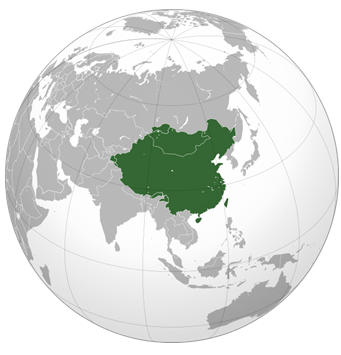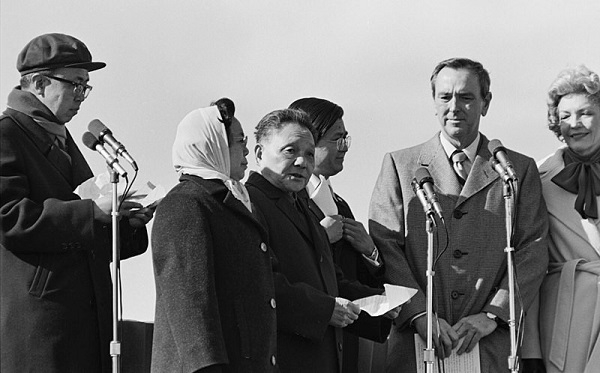

China has seen substantial transformation in the nineteenth century, as well as a more recent phase of fast modernisation that began in the 1980s. Appropriately,, there have been notable social, cultural, and economic changes that have an impact on Chinese people's daily life.
Modernization is a necessary and universal process with a long history. Additionally, technological and economic modernization are required of nations that seek to adjust to external conditions and strive for high levels of development in order to be competitive on the global arena. The danger to China's independence in the late 19th century had an impact on external forces, which made it clear that new technology needed to be imported before new economic, social and political institutions could be introduced to Chinese society.
China is undergoing profound, progressive changes in its society, politics, economics, and culture. These changes signify the improvement of an existing system, not the overthrow of an existing regime. The Chinese miracle was meant to astound the world only under stable conditions. Today, it is evident that China's modernization is a dynamic, intricate, uneven, and lengthy process. We generally divide modernisation of Chinese society into three stages: early, revolutionary, and deformational. Specific objectives, difficulties, and restrictions were described for each stage.
At the initial stage, achieving National Independence was the main objective.
The second one involves looking for new state system configurations, national economic recovery, industrialization, and development of a new identity (Mao).
The Qing dynasty, who were in power at the time and ruled a 2000-year-old empire, began to fall apart, and this sparked China's march for modernity. Midway through the 19th century, when imperialist Western forces were seeking to expand trade with nations in the East, the Qing dynasty suffered its first significant setback.

The Empire of Great Qing
TRAJAN 117, CC BY-SA 3.0
The traditional Chinese style of thinking underwent substantial modification as a result of modernization processes.
First, conservatism was a hallmark of old agrarian culture. However, trends like globalization, marketization, and information technology are compelling people in contemporary society to look to the future, set new goals, and attain them.
The coordination, harmonization and integration of various interests are given increasing focus in modern Chinese society as the importance of the "individual" rises. In the old society, the "collective" was evaluated more than the "individual.
" Third, Chinese society is raising its members with analytical and critical spirits thanks to the influence of modern science.
If there was a national consensus in China, it was centred on the dedication to the Four Modernizations −
National defense,
Industry,
Research, and
Agriculture
The Four Modernizations were implemented in 1977 to revive China's economy in the wake of Mao Zedong's passing; they later became one of the defining characteristics of Deng Xiaoping's reign as China's supreme leader.

Deng Xiaoping
Acroterion, CC BY-SA 4.0
Deng further advanced the concept of "xiaokang," or "Moderately Prosperous Society," at the outset of "Reform and Opening-up" in 1979.
Premier Zhou Enlai of China (in office from 1949 until his death in 1976) first proposed the Four Modernizations in December 1964, but they were not immediately put into practice because Mao Zedong's Cultural Revolution (1966– 1966) ideology gained precedence.
At the Fourth National People's Congress in 1975, Zhou reintroduced them, and Deng Xiaoping, who was deputy premier at the time, backed them. However, the government did not give the Four Modernizations priority until after Mao's passing in September 1976 and the subsequent persecution of the Gang of Four, a group of party officials who had opposed the Four Modernizations.
The enhancement of social services, raising the cultural level of the rural people, and raising the income level to that of urban residents are all examples of infrastructure development.
Without an education that prepares people to be "modern people," society cannot truly modernize.
Architect of the advancements, reforms, and revolutions in science and technology.
Human intervention, active labour, or innovation.
The Economic Stages of Growth by Rostow is one illustration of a modernization theory. According to this paradigm, a country must pass through five stages before being completely developed.Based on economic activities, Rostow's classic Stages of Economic Growth, which was published in 1960, was built on these ideas. Five stages of development were recognized for all countries, including −
Traditional society
Preconditions to take-off
Take-off
Drive to maturity
Age of high mass consumption.
The Qing dynasty, who were in power at the time and ruled a 2000-year-old empire, began to fall apart, and this sparked China's march for modernity. Midway through the 19th century, when imperialist Western forces were seeking to expand trade and influence with nations in the East, the Qing dynasty suffered its first significant setback. China is undergoing profound, progressive changes in its society, politics, economics, and culture. These changes signify the reform of an existing mode, not the overthrow of an existing regime. The Chinese miracle was only able to astound the world if stability was maintained. Today, it is evident that China's modernization is a dynamic, intricate, uneven, and lengthy process.
Q1. How did Mao change China's economy?
Ans. Mao served as the party's leader in China. Mao started a broad campaign to collectivize the economy. Before Mao's Long March, a small number of warlords ruled China. Mao began the socialist education movement and started the cultural revolution, a campaign to eradicate counterrevolutionary elements from Chinese society. The fields and the factories were nationalized.
Q2. What is a physical contest between China and Japan?
Ans. Japan is a collection of islands, whereas China is a sizable continental nation. While Japan is an earthquake-prone nation, China has stable landforms. While Japan lacks a similar drainage system, China has three river systems. China has a diverse population, including Uighur, Hui, Manchu, and Tibetan, however the majority of the population in Japan is Japanese.
Q3. What kind of regional variation is present in Chinese cuisine?
Ans. Chinese food is in variety. Cantonese cuisine, staple foods like wheat, fiery cuisine, and rice and wheat are the four main categories of food.
Q4. Who has claimed credit for modernizing China?
Ans. Mao Zedong and Sun-Yat-Sen. Liang Qichao and Kan Youwei. Kan Youwei offered new interpretations on well-known ideas. The first republic, established by Sun-Yat-Sen, maintains a balance between western and Japanese traditions. Mao Zedong fought to put an end to inquiries and foreign rule. He was the outstanding leader of the C.C.P.
Q5. What impact has modernisation had on society?
Ans. As societies become more modern, the individual becomes further sustainable, continuously replacing the family, community, or professional group as society's basic unit. Institutions, which promote a higher level of specialization, also use the division of labor, a hallmark of industrialisation.